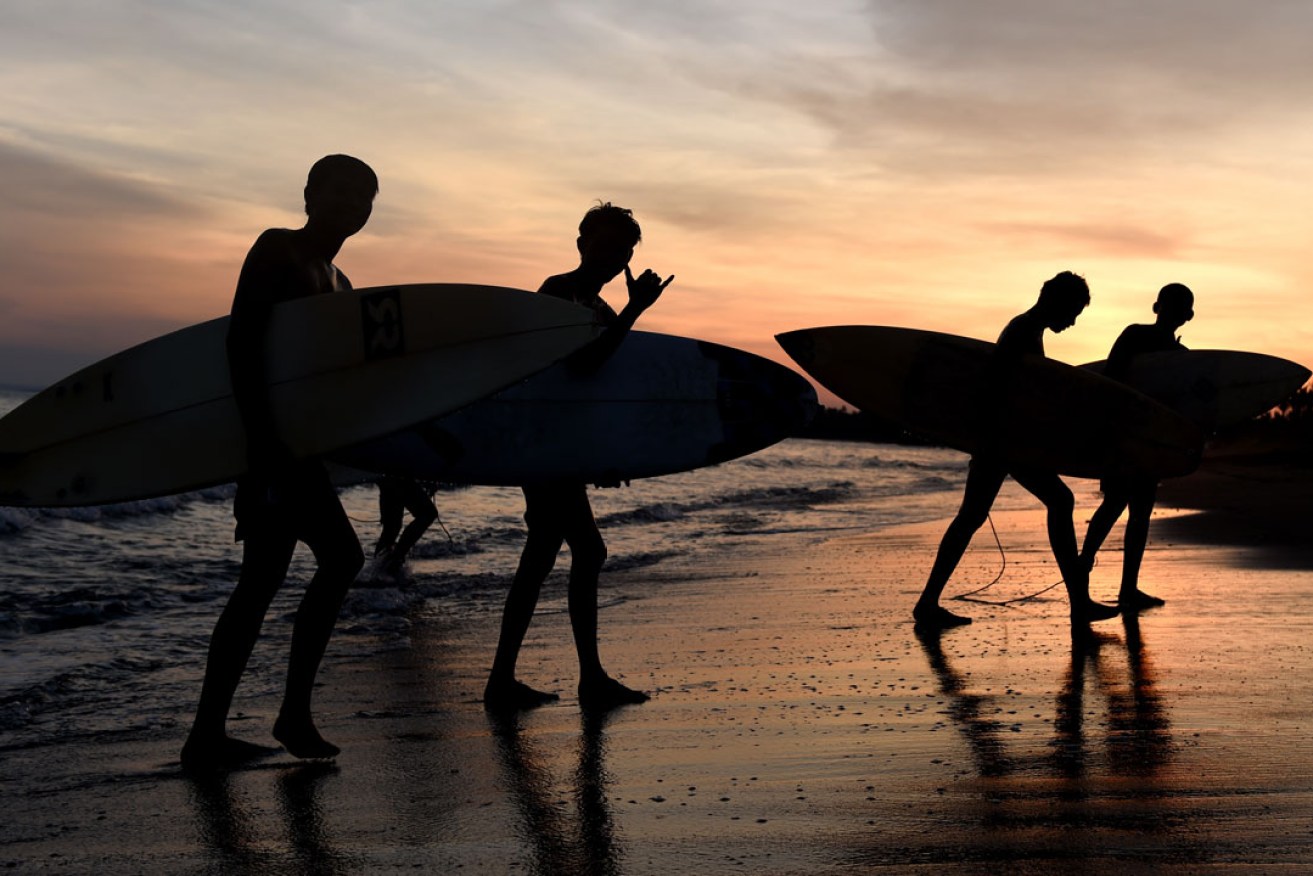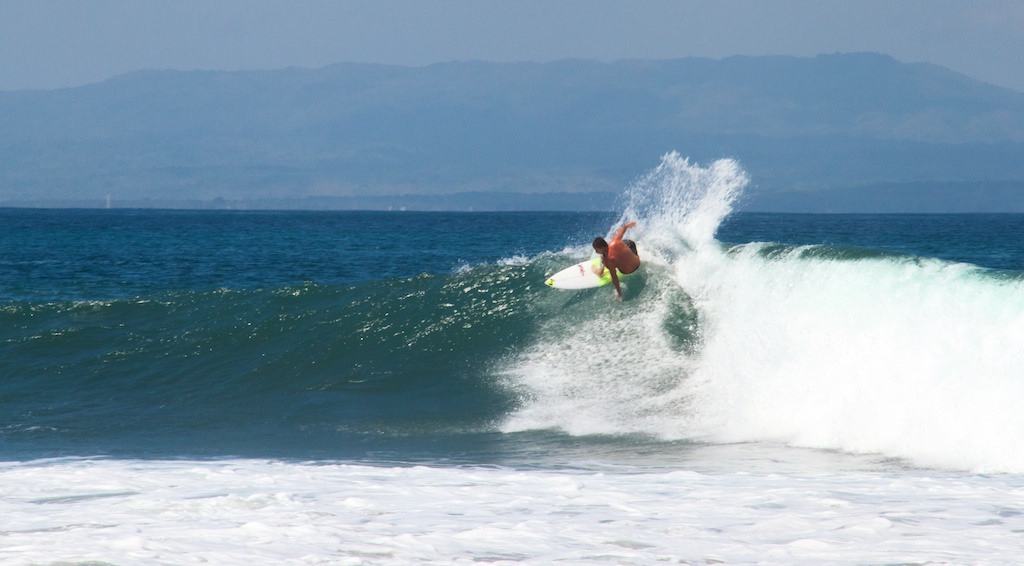How hard can it be to catch a break in Bali?
Bali’s east coast is home to some of the world’s top surfing locations and refreshingly free of island cliches. The perfect place to catch your first break.

Surfers leave the water as the sun sets on Keramas Beach in Bali. Photo: Paul Miller / AAP
Surfing is as Australian as going to Bali on holiday, but until recently, I’d never tried either.
“See if you can catch the ball,” my instructor shouts as a medicine ball is hurled my way. My training surfboard wobbles beneath me as I make the catch.
The dark, wooden gym echoes with the sound of people, supposedly on holiday, as they pant and sweat through their workouts. It’s an odd place to practice surfing, because the only water is in a cooler.
My training board sits atop inflatable bladders that are designed to simulate the feel of the surf. I’m thinking the open water would be calmer. The medicine ball comes to me again, and I jink hard, just catching it.
But my feet stay on the board, and my confidence grows as we toss the ball back and forth, back and forth. The exercise is designed to build a controlled sway through concentration and balance. It’s like learning to walk again: a big effort, but the rewards are there. Or that’s the promise.
Surf culture has always intrigued me. The lifestyle, the rush, the bizarre lingo and the prospect of an endless summer are the hallmarks of a tribe I found inscrutable. I grew up too far from the beach and my swimming ability is below average.
Bali has never held any particular intrigue. The Indonesian island attracts a particular clientele, and I’ve never been in any hurry to join their ranks.
Yet here I am, on the island’s east coast, home to some of the world’s top surfing locations. It’s also refreshingly free of Bali cliches – proof that it’s entirely possible not to stay in Kuta, get wasted or wear a Bintang singlet.
It’s the surfing that’s hard, as myself and the other “hodads” (inexperienced surfers) are discovering.
“Now try standing up from lying down.”
A “pop-up” – the technique of going from horizontal to vertical in a single movement – must be mastered to have any chance of actually surfing. It’s much harder than it sounds.
Over and over, I try to lift my six-foot frame upright, but my feet let me down.
“Good surfers have short legs,” we’re told.
Right now, I’m not worried about becoming a good surfer. I’d be happy just not being the worst of the group.

An experiences surfer shows how it’s done. Photo: Mikaku / AAP
Looking out at the surf from the air-conditioned comfort of one of Hotel Komune’s beachfront pool suites, it all looks so easy. Paddle out from the beach, turn, paddle toward the beach, and stand. Simple.
But as we make our way down to the warung on Keramas Beach to collect our real surfboards, I feel slightly nervous. By the time we’re standing on the black sand, looking out at the chop, the feeling has escalated.
The surf looks healthy. In a move that drives our confidence to record lows, we’re told good surfers, and even world champions, have ridden this break.
We’re told it’s a “right-hand reef break” – as if that means anything to us.
“How high is this?” I ask our guide, trying to sound knowledgeable. “About two or three feet?”
“Maybe one,” he says.
Some may argue that having a grown man standing chest height beside you in the water while foisting your board onto a wave isn’t real surfing. I tend to agree.
Right now, my guide is the difference between little and no chance of me getting vertical.
“Let’s try this next wave,” he says. “Ready?”
It isn’t a question.
It’s over before it starts. My dream of being an instant surfing God is pulled out from under me along with my board. But I paddle out again, undaunted.
Another wipe-out.
It would be so easy to retreat to the black sand and enjoy the tropical scenery.
But I came here to surf. I head back out to my guide. “Go, paddle,” he urges with a push. Board and wave align, and in an instant, I struggle to one knee, and then to both feet.
It lasts only seconds (no time for my controlled sway), but as the swell carries me, I taste saltwater and satisfaction in equal doses.
Getting there: Virgin Australia, Jetstar and Garuda all operate daily scheduled flights to Denpasar from most Australian capital cities. Hotel Komune, which sits on Keramas each in Gianyar, is approximately an hour’s drive from Denpasar airport.
Stayng there: Hotel Komune offers a variety of accommodation from the tucked away Resort Rooms at $US89 ($A116) per night, the Beachfront Pool Suites at $US195 per night, and for those who need a bit more space or beds, the Two-Bedroom Villa at $US350 per night. More details here.
Playing there: Hotel Komune offers a two-hour surf lesson. It includes starting with the basics on the Surfset training board in the Health Hub Gymnasium, surfboard hire and a lesson from one of the hotel’s qualified lifeguards at $US49 ($A64) per person.
* The writer travelled as a guest of Hotel Komune, Bali.
-AAP




